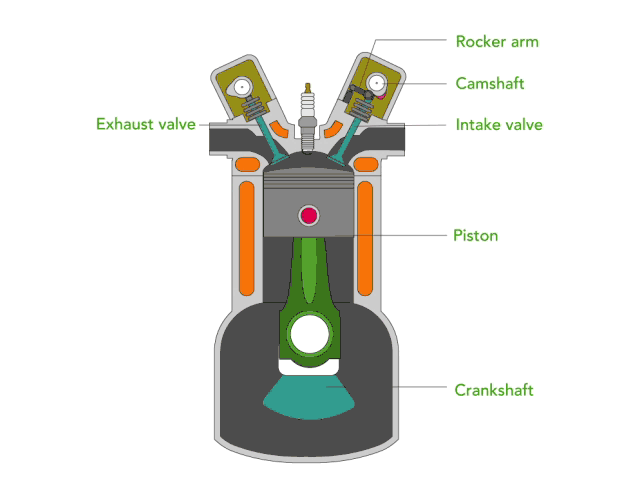Learn how a new compact technology in the 2014 Chevy Impala is having a big impact on the vehicle's fuel consumption.
August 14, 2014
America is reinventing its auto industry, making vehicles that can go farther on a gallon of fuel and saving consumers money at the pump. Through investments in advanced vehicle technologies, the Energy Department is positioning the United States to lead in the global auto market instead of chasing to keep up. Follow along on Energy.gov during August as we highlight some of the automotive innovations that can be traced back to the Department.
Tucked under the hood of the 2014 Chevy Impala is a compact technology that is having a big impact on the vehicle’s fuel consumption. Called the Intake Valve Lift Control, this technology is helping drivers save up to one mile per gallon of gasoline, and based on recent U.S. Impala sales, it adds up to an estimated savings of 4 million gallons of fuel a year.
More than 230 million passenger vehicles in the U.S. currently use internal combustion engines, and because of their high reliability and affordability, they will continue to be used to power vehicles for the foreseeable future. That’s why researchers -- supported with a $6.2 million award from the Energy Department and matched dollar for dollar by General Motors -- focused on improving the efficiency of the internal combustion engine while lowering its emissions.
To understand how GM’s Intake Valve Lift Control works, it’s important to understand the basic mechanics of the internal combustion engine. An automobile’s engine works using a mixture of fuel and air entering a combustion chamber through intake valves. When that mixture is ignited, it causes an explosion that pushes down a piston, turning a crankshaft and driving the vehicle’s wheels. In most internal combustion engines, the intake valve opens a set distance and length of time to let in the fuel and air mixture. As a result, the engine must work harder than it needs to during less demanding conditions, like on level roads and in stop-and-go city traffic.
GM changed all that by developing the Intake Valve Lift Control, which can operate at two different lift and duration modes. During normal driving conditions, the intake valve operates in low-lift mode, only providing the airflow that is required and maximizing the vehicle’s fuel economy. At higher speeds or under heavy loads, the intake valve automatically switches to high-lift mode, providing the maximum power output of the engine.
GM achieved this by developing a new rocker arm that controls when the intake valve opens and closes. In low-lift mode, the engine’s computer increases oil pressure to the rocker arm, preventing the arm from opening the intake valve as much as it did in the previous Impala, while in high-lift mode, the computer decreases the oil pressure and allows the intake valve to open fully. All of this happens without any action from the driver, increasing the Impala’s fuel economy and lowering its emissions without affecting performance.
[[{"type":"media","view_mode":"media_large","fid":"838666","field_deltas":{},"link_text":null,"attributes":{"alt":"closeUp_engine-01.png","height":360,"width":480,"class":"media-image caption media-element file-media-large","data-delta":"1"},"fields":{}}]]
Through research and development projects like this one with GM, the Energy Department is working to improve the efficiency of internal combustion engines in passenger vehicles by 25 percent. If every vehicle on the road met that goal, the U.S. would cut its oil consumption by more than 600 million barrels of oil a year. To learn more about how the Department is supporting advanced combustion engines, visit the Vehicle Technologies Office’s website.
What are the key facts?
Through investments in advanced vehicle technologies, the Energy Department is helping consumers save money at the pump.
A new compact technology in the 2014 Chevy Impala, developed with support from the Energy Department, is having a big impact on the vehicle's fuel consumption.
Called the Intake Valve Lift Control, this technology is helping drivers save up to one mile per gallon of gasoline -- adding up to an estimated savings of 4 million gallons of fuel a year based on recent Impala sales.
Rebecca Matulka

Rebecca Matulka served as a digital communications specialist for the Energy Department. In 2012, she joined the Energy.gov team, covering all things energy efficiency -- from fuel cells and vehicle technologies to advancements in manufacturing and consumer energy efficiency tips. Previously, Rebecca worked at an environmental nonprofit, where she built the organization's digital presence and spearheaded its rebranding efforts.
An avid reader and a want-to-be master chef, Rebecca spends her free time with her nose buried in the latest fiction best seller or trying out new recipes. She can also be seen walking her dog Miette -- the world's cutest pomeranian -- around D.C.


